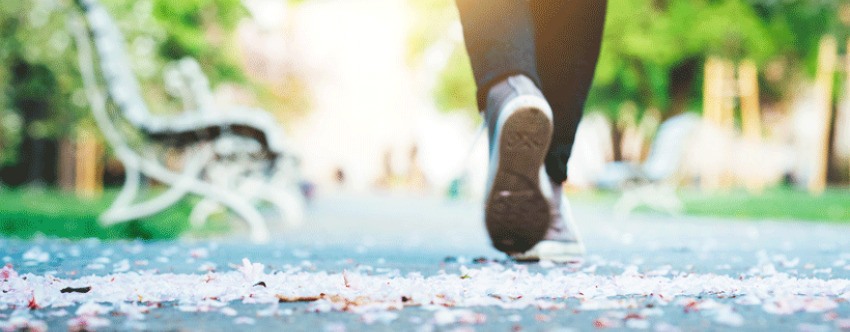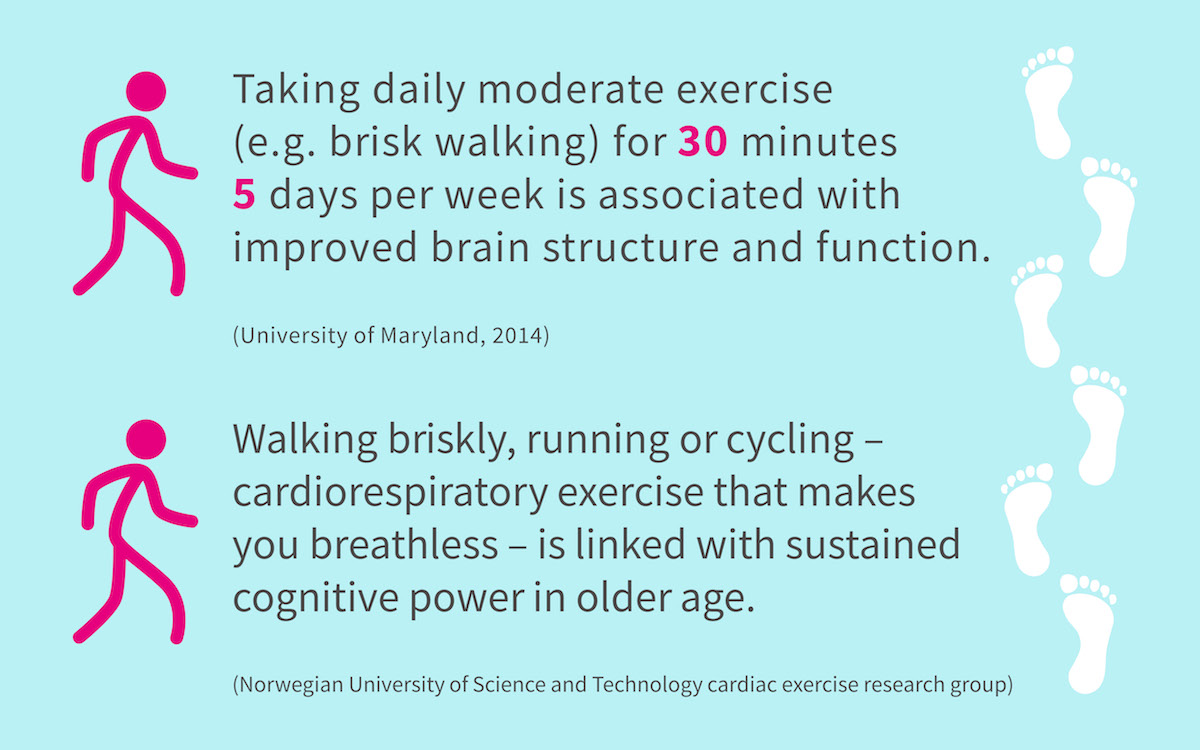News & Views

Best foot forward: Walk for wellbeing
For decades, the health industry has tried to encourage people to try all manner of exercise methods to stay as well as possible, while the most effective (for most people) method is right under our noses. It is walking and the benefits are numerous.
Here are a couple of ways research supports the idea that walking benefits humans.

Stride out
If you need more than evidence to get on your feet, here are seven ideas to try (for yourself and your children):
- Make it count. Many people like counting steps and aiming for a particular number daily. This might not appeal to you, so rather than counting daily steps, count minutes spent on your feet or walking outside.
- Set goals. You should have something to aim for: increase the number of steps you take by 100 per day or the number of minutes you walk each day by five. In a week, feel the difference in your body. You might also notice a difference in other health areas, particularly your mental or emotional health.
- Rate your experience. You could rate how you feel before and after a walk and notice the differences; most people will likely feel more alert and move more easily once they have been for even a short walk.
- Consider active work times. Think creatively about how you can be on your feet more. Stand up and pace around during phone calls. Have walking meetings where possible. Teach standing up and encourage children to stand or move around as they learn (making sure your teaching area remains safe for all).
- Be creative about travelling. Could you walk the whole journey or just a part of it? Could you use the stairs more than usual? Could you park in the space furthest from where you need to be?
- Fundraise! Could you raise some money while walking? Consider doing a sponsored walk if you have a particular cause or charity you would like to support financially. It doesn’t have to be hundreds of miles long or involve wearing an uncomfortable costume. Just ask people to support your efforts and remember that every penny counts. You might like to invite local businesses to match-fund your efforts.
- Be mindful... When you are out walking, notice what is going on around you. In other words, be mindful. Use your senses as much as you can. That might mean listening to the birds or the sound of distant traffic. It might mean stopping to taste wild garlic or juicy blackberries (check that you know what you’re eating before you tuck in!). Maybe it means savouring the smell of freshly mown grass and the sight of squirrels leaping through the trees. If you enjoy photography, you could record each walk you embark on throughout the year with a photo to capture something you saw. This is an excellent activity for children to try so that they can track what they have noticed.
Stay motivated
It is worth remembering that motivation is vital for maintaining healthier habits. These ideas can help if motivation wanes.
- Set some achievable goals. Try to ensure your goals are realistic. Set small, possible objectives and achieve them regularly. This will help maintain your motivation.
- Make your goals fun! Add a bit of levity rather than plodding through things you don’t enjoy. Would listening to some uplifting music or a funny podcast help?
- Do a little bit every day or at least fairly often. Keep chipping away and you will notice the benefits.
- Get others involved to help with motivation and collaborate, perhaps by finding a walking buddy. If others know you are working towards something, they can help when things get tough and offer encouragement and support.
- Write down your challenge and how you are going to get there. Tick off the small steps that you have achieved so you can see that you can make progress, even if it feels like the main goal is far in the distance.
- Reward yourself for every small gain. Take a few minutes to consider how far you have come and congratulate yourself on your achievements. Bear in mind that rewards don’t have to be food or drink.
- Be realistic. Some days don’t lend themselves to doing much and some goals might need to be changed mid-way. Keep moving forwards regardless. Moreover, drop anything that is not working well. It’s not failure – it’s realism.
- Finally, rest and relax when you need to. Often, we don’t need to give up; we need to rest.

Low-maintenance exercise
Remember that one of the best things about walking is that you don’t necessarily need specific equipment. A comfortable pair of shoes allowing your feet to move freely and easily can make walking even more joyous. You might like to try walking barefoot and notice how the experience feels in your whole body; make sure you start gradually and on surfaces that you find easy – grass or sand is a great place to start before transitioning to smooth pathways or similar.
However you walk, know that it makes a positive difference in your body and mind and that those benefits last much longer than the walk itself.
Support and improve physical, emotional and mental health for all staff with the Staff Wellbeing Award.
About the author

Joanna Feast is an education consultant specialising in PSHE education across the age ranges. She is also the founder of Clean Well-Being and author of the Outdoor Learning Award.
